Ecoboost Technology: Direct Injection Is Cool
Direct injection is one of the cool technologies that makes Ford's new EcoBoost engine possible.
The all-new engine delivers better fuel economy and reduced emissions as well as improved performance and engine refinement gives it a cool all its own. With an estimated, class-leading 355 horsepower, the 2010 Lincoln MKS with EcoBoost is expected to deliver best-in-class highway fuel economy of 25 mpg.
With its premium EcoBoost engine, the new Lincoln will deliver more power and better highway efficiency than the 2009 Lexus GS460 (24 mpg) or 2009 Infiniti M45 (21 mpg).
"Direct injection is a significant player in Ford's strategy to replace larger engines with smaller EcoBoost engines, improving fuel economy by up to 20 percent without sacrificing performance," says Brett Hinds, EcoBoost design manager. "We're going to be deploying direct injection to bring a wave of EcoBoost engines into Ford Motor Company products. It starts with the Lincoln MKS and by 2013 more than 90 percent of our North American lineup will offer EcoBoost technology."
Direct injection even uses its cool to chill engine intake air, which improves fuel economy and reduces the potential for engine knock.
"Cool air is good for an engine because it minimizes the engine knocking phenomenon," explains Corey Weaver, EcoBoost project leader. "Anything you can use to cool the air is good. Injecting the fuel into the cylinder, you cool it on the spot, where you're going to burn it. Fuel vaporization during the intake stroke cools the air, improving the volumetric efficiency, the breathing of the engine and the knocking tendency."
Isn't that cool?
EcoBoost Direct Injection
The EcoBoost direct injection system precisely delivers a fine mist of fuel directly into each cylinder for optimal performance, economy and emissions. Unlike port-fuel-injection (PFI) engines that spray fuel in the intake system, the direct injection system puts the fuel exactly where it needs to be for combustion.
A high-pressure injector is positioned to the side of each cylinder, aiming the fuel directly into the cylinder adjacent to a high-intensity spark plug and alongside the intake and exhaust valves. Fuel is sprayed into the cylinders at pressures of up to 2,150 pounds per square inch (PSI), which is about 35 times more intense than PFI injection.
Fuel from the vehicle tank is pumped at normal pressure to the engine compartment, where a special, cam-driven, high-pressure fuel pump increases the fuel pressure. Depending on the demands of the driver, the system operates between 200 and 2,150 PSI.
"Think of the direct injection system like the mist from an atomizer bottle that you spray to keep yourself cool," explains Craig Stephens, EcoBoost powertrain control system manager. "Our system creates a fine spray that atomizes the fuel, making it easy to ignite and burn completely."
Each bank of cylinders in the V-6 EcoBoost engine has a high-pressure fuel rail that feeds the individual injectors and a fuel rail pressure sensor on each rail that helps the vehicle powertrain control module precisely control the fuel pressure.
The Bosch high-pressure fuel injectors use internal solenoids to switch on and off the flow of fuel extremely precisely. Fuel flows through six tiny outlets – like pinholes – in each injector, and each spray is positioned to provide benefits in fuel economy and emissions.
Electronic control system varies the timing and intensity of the fuel delivery according to engine operating conditions.
"This new EcoBoost direct injection system gives us great flexibility, particularly for cold-start performance and emissions," said Todd Rumpsa, EcoBoost calibration supervisor. "We can achieve multiple injections per combustion event, tuning where those injections should best take place to deliver the strongest start possible with the lowest emissions."
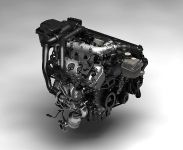
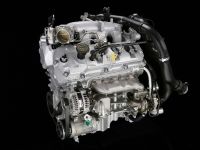
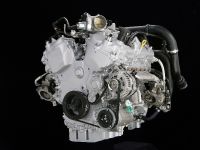
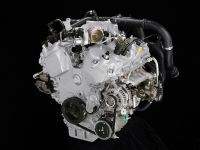
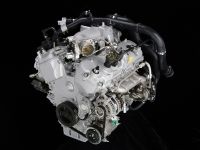
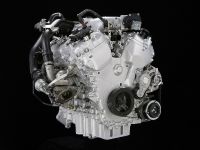
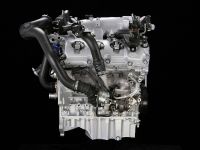
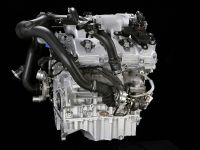

![2014 Engine of the Year - Results [images]](http://www.automobilesreview.com/uploads/2014/06/2014-Engine-of-the-Year-b.jpg)






